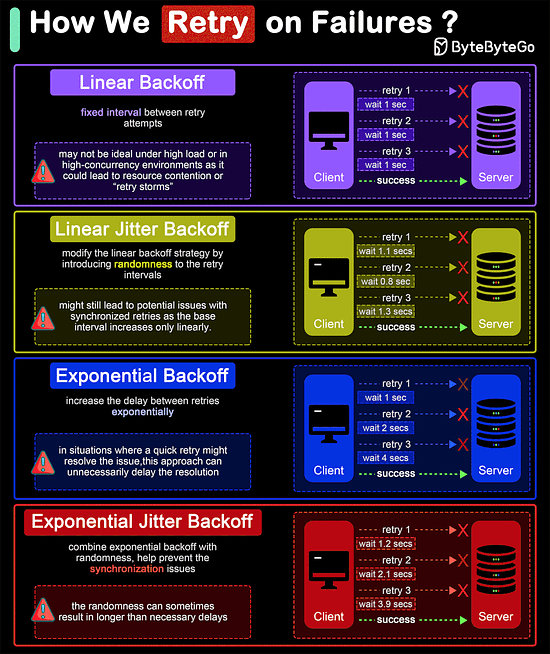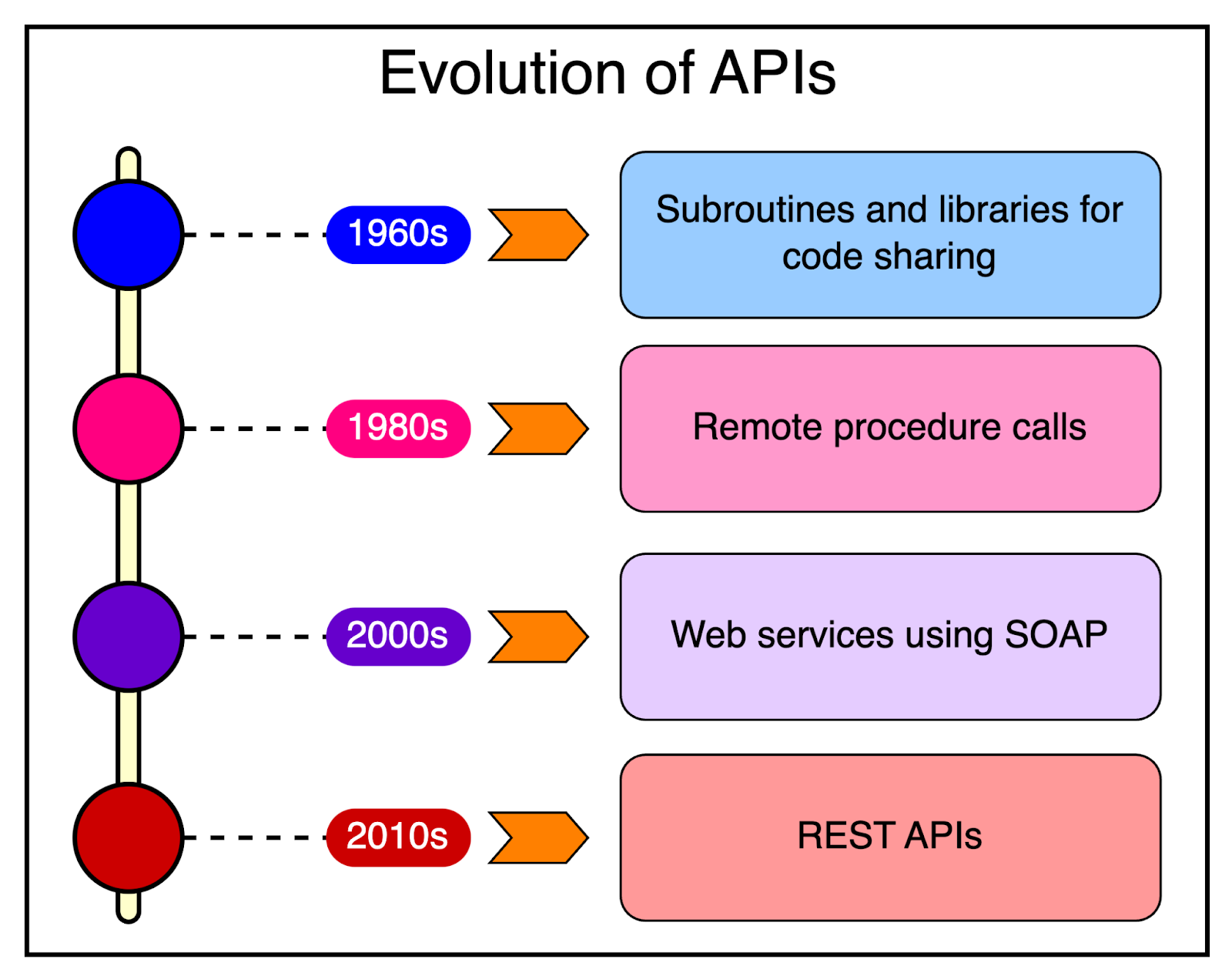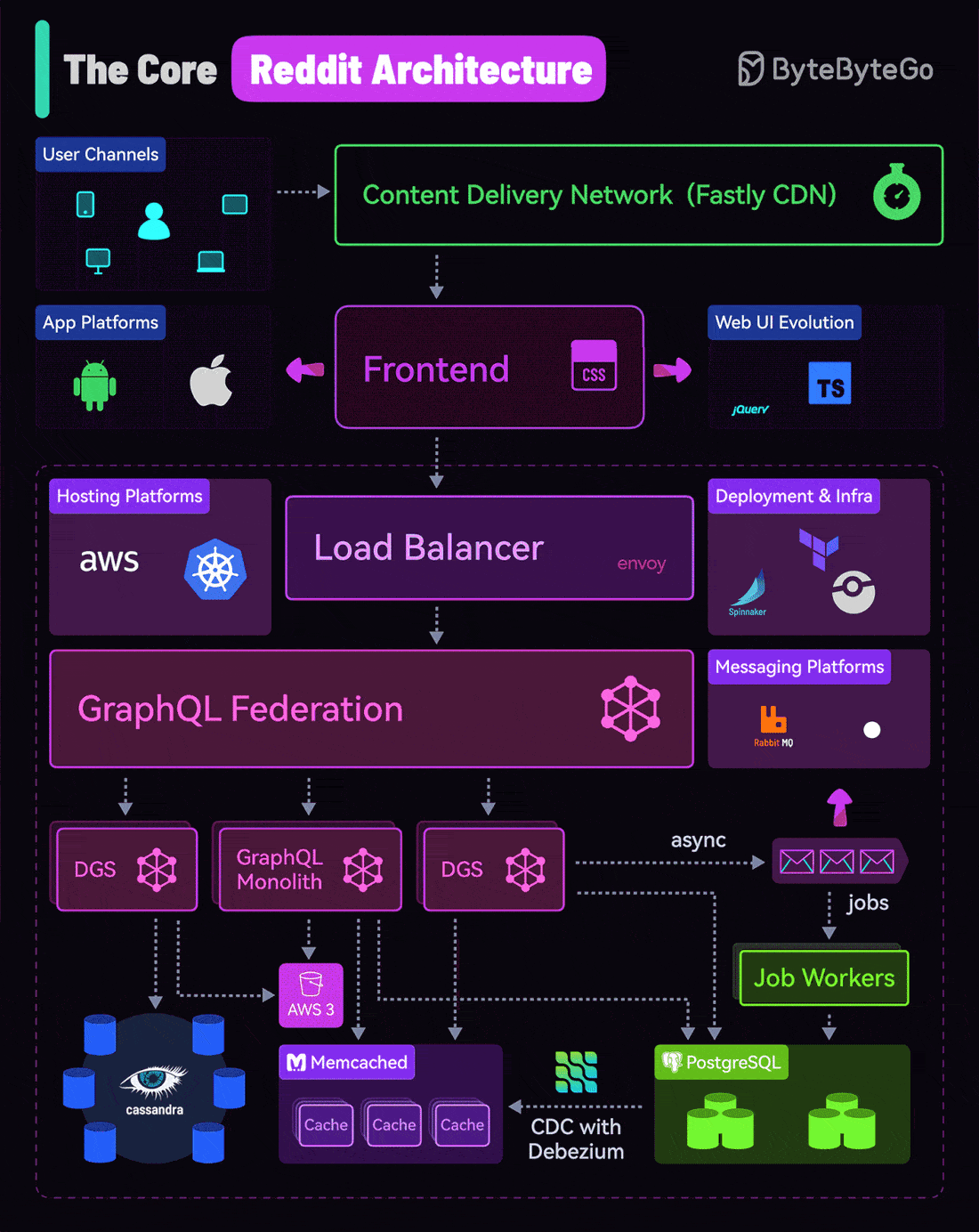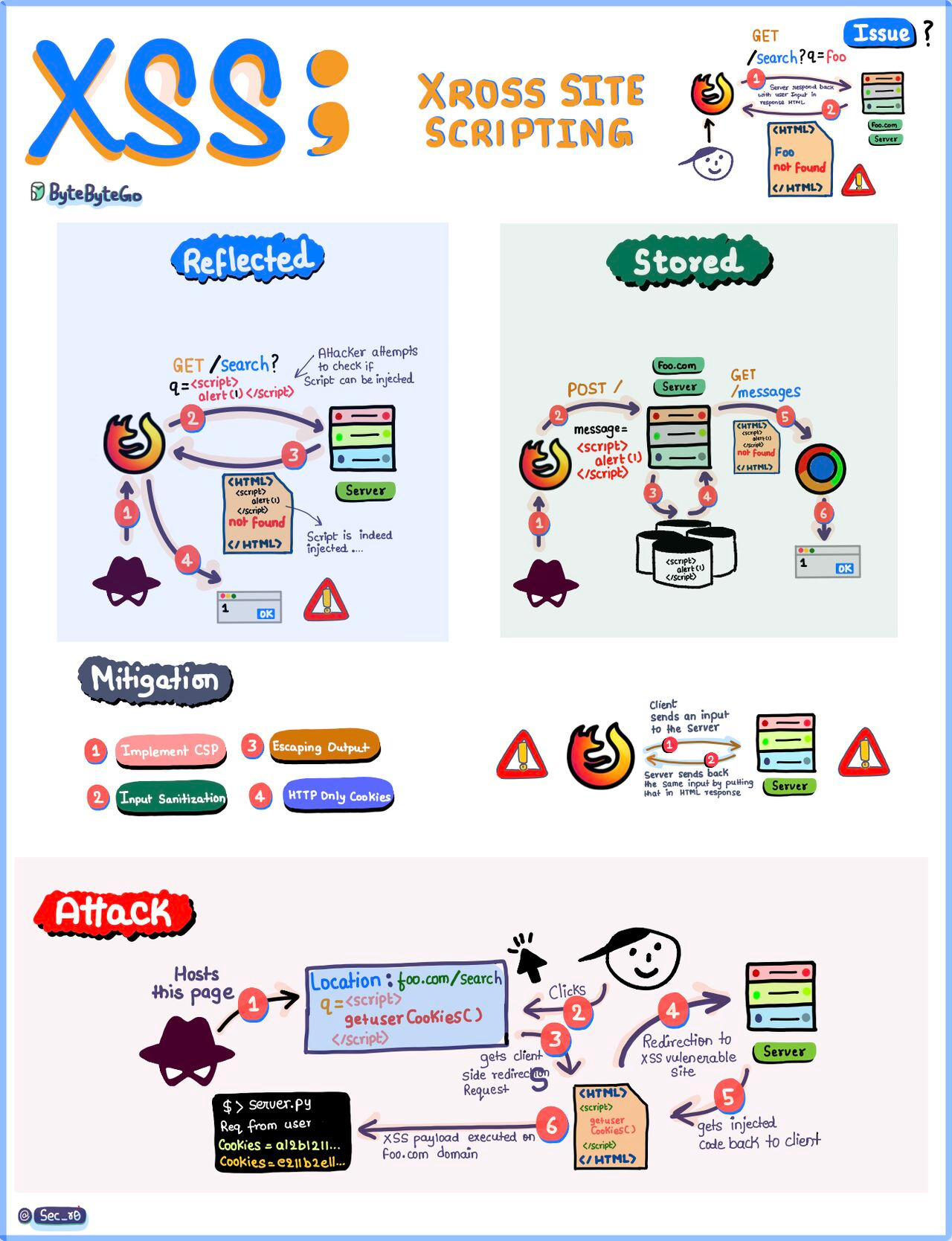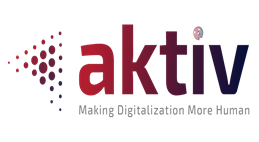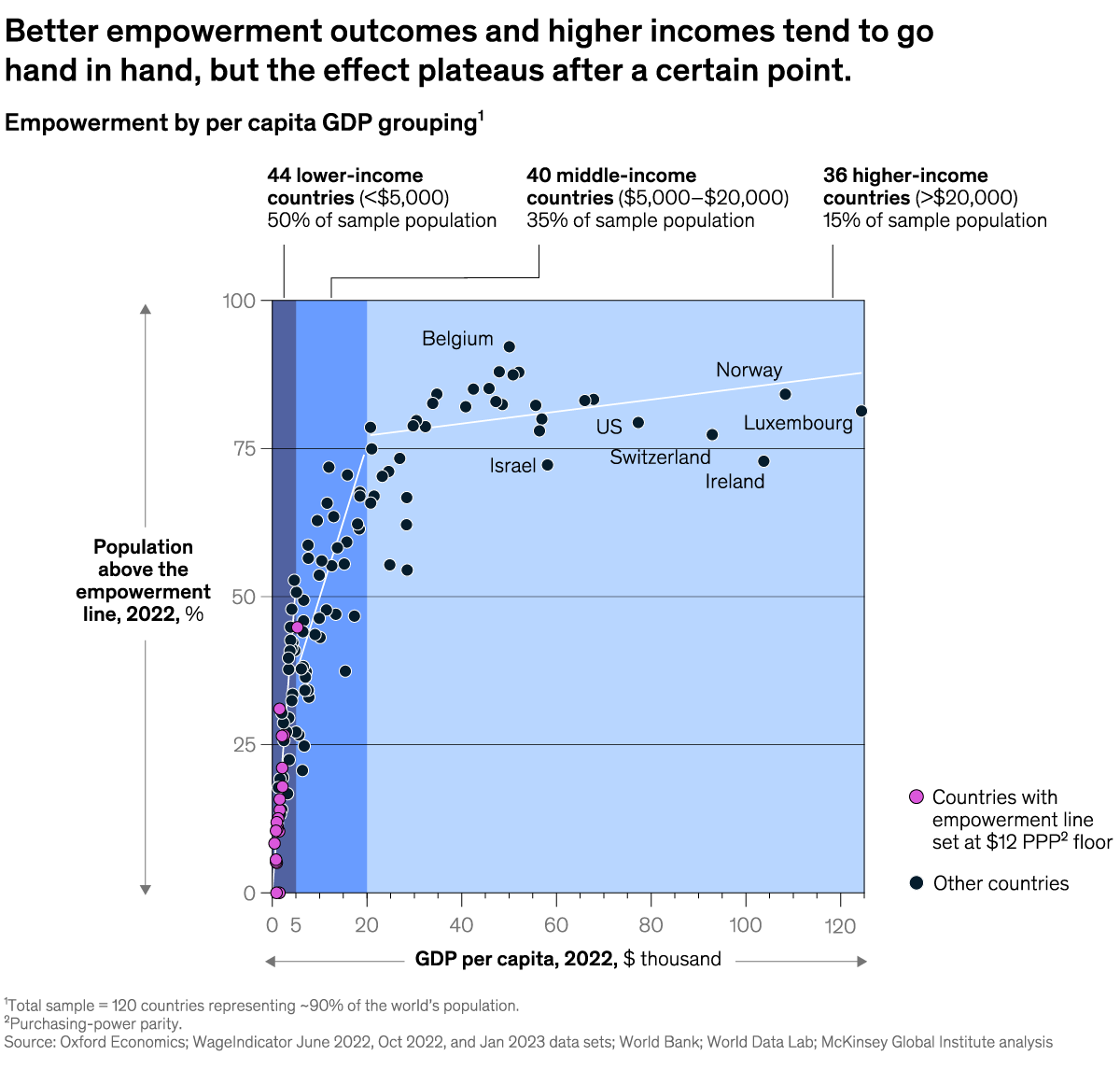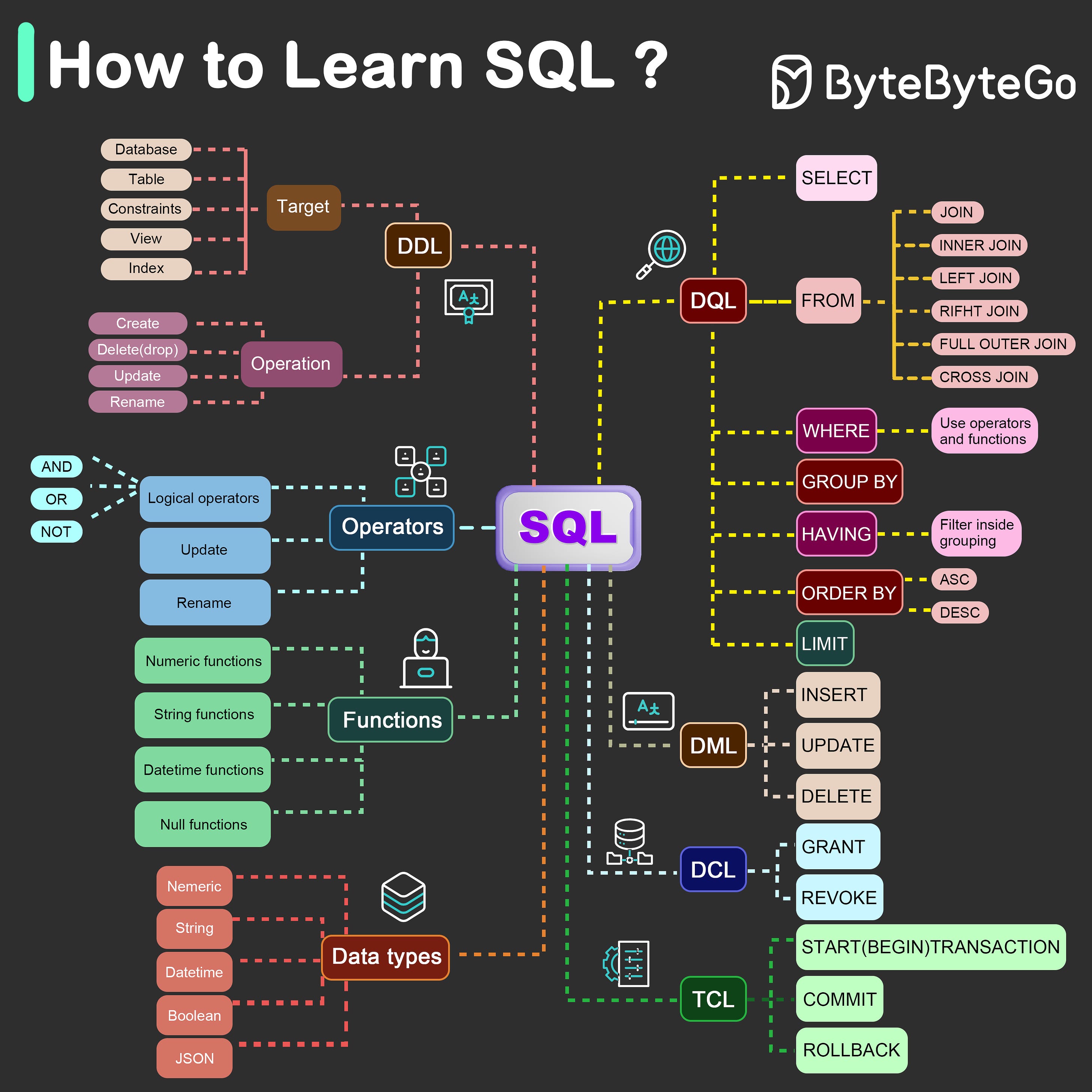Archives
- By thread 5363
-
By date
- June 2021 10
- July 2021 6
- August 2021 20
- September 2021 21
- October 2021 48
- November 2021 40
- December 2021 23
- January 2022 46
- February 2022 80
- March 2022 109
- April 2022 100
- May 2022 97
- June 2022 105
- July 2022 82
- August 2022 95
- September 2022 103
- October 2022 117
- November 2022 115
- December 2022 102
- January 2023 88
- February 2023 90
- March 2023 116
- April 2023 97
- May 2023 159
- June 2023 145
- July 2023 120
- August 2023 90
- September 2023 102
- October 2023 106
- November 2023 100
- December 2023 74
- January 2024 75
- February 2024 75
- March 2024 78
- April 2024 74
- May 2024 108
- June 2024 98
- July 2024 116
- August 2024 134
- September 2024 130
- October 2024 141
- November 2024 171
- December 2024 115
- January 2025 216
- February 2025 140
- March 2025 220
- April 2025 233
- May 2025 239
- June 2025 303
- July 2025 176
-
EP114: 7 Must-know Strategies to Scale Your Database
EP114: 7 Must-know Strategies to Scale Your Database
This week’s system design refresher: 7 must-know strategies to scale your database How do we retry on failures? Reddit’s Core Architecture What is the best way to learn SQL? Everything You Need to Know About Cross-Site Scripting (XSS) SPONSOR US Your ultimate guide to integrating email, calendars & contacts (Sponsored)͏ ͏ ͏ ͏ ͏ ͏ ͏ ͏ ͏ ͏ ͏ ͏ ͏ ͏ ͏ ͏ ͏ ͏ ͏ ͏ ͏ ͏ ͏ ͏ ͏ ͏ ͏ ͏ ͏ ͏ ͏ ͏ ͏ ͏ ͏ ͏ ͏ ͏ ͏ ͏ ͏ ͏ ͏ ͏ ͏ ͏ ͏ ͏ ͏ ͏ ͏ ͏ ͏ ͏ ͏ ͏ ͏ ͏ ͏ ͏ ͏ ͏ ͏ ͏ ͏ ͏ ͏ ͏ ͏ ͏ ͏ ͏ ͏ ͏ ͏ ͏ ͏ ͏ ͏ ͏ ͏ ͏ ͏ ͏ ͏ ͏ ͏ ͏ ͏ ͏ ͏ ͏ ͏ ͏ ͏ ͏ ͏ ͏ ͏ ͏ ͏ ͏ ͏ ͏ ͏ ͏ ͏ ͏ ͏ ͏ ͏ ͏ ͏ ͏ ͏ ͏ ͏ ͏ ͏ ͏ ͏ ͏ ͏ ͏ ͏ ͏ ͏ ͏ ͏ ͏ ͏ ͏ ͏ ͏ ͏ ͏ ͏ ͏ ͏ ͏ ͏ ͏ ͏ ͏ ͏ ͏ ͏ ͏ ͏ ͏ ͏ ͏ ͏ ͏ ͏ ͏ ͏ ͏ ͏ ͏ ͏ ͏ ͏ ͏ ͏ ͏ ͏ ͏ ͏ ͏ ͏ ͏ ͏ ͏ ͏ ͏ ͏ ͏ ͏ ͏ ͏ ͏ ͏ ͏ ͏ ͏ ͏ ͏ ͏ ͏ ͏ ͏ ͏ ͏ ͏ ͏ ͏ ͏ ͏ ͏ Forwarded this email? Subscribe here for moreThis week’s system design refresher:
7 must-know strategies to scale your database
How do we retry on failures?
Reddit’s Core Architecture
Everything You Need to Know About Cross-Site Scripting (XSS)
SPONSOR US
Your ultimate guide to integrating email, calendars & contacts (Sponsored)
Launch native email, calendar, and contacts capabilities with the greatest possible ROI. This latest guide from Nylas walks you through the most common options to launch these integrations for all major email and calendar service providers (Gmail, Outlook, IMAP, etc.) including APIs vs. building yourself. Read on to discover best practices and:
How complex it is to build the email, calendar and contacts integration from scratch
The true cost of building your own email, calendar, contacts integration
6 Questions for CTOs and product managers to future-proof their business
If you're interested in trying out an API that integrates these email and calendar service providers for you, check out Nylas.
7 must-know strategies to scale your database
Indexing:
Check the query patterns of your application and create the right indexes.Materialized Views:
Pre-compute complex query results and store them for faster access.Denormalization:
Reduce complex joins to improve query performance.Vertical Scaling
Boost your database server by adding more CPU, RAM, or storage.Caching
Store frequently accessed data in a faster storage layer to reduce database load.Replication
Create replicas of your primary database on different servers for scaling the reads.Sharding
Split your database tables into smaller pieces and spread them across servers. Used for scaling the writes as well as the reads.
Over to you: What other strategies do you use for scaling your databases?
How do we retry on failures?
In distributed systems and networked applications, retry strategies are crucial for handling transient errors and network instability effectively. The diagram shows 4 common retry strategies.
Linear Backoff
Linear backoff involves waiting for a progressively increasing fixed interval between retry attempts.
Advantages: Simple to implement and understand.
Disadvantages: May not be ideal under high load or in high-concurrency environments as it could lead to resource contention or "retry storms".Linear Jitter Backoff
Linear jitter backoff modifies the linear backoff strategy by introducing randomness to the retry intervals. This strategy still increases the delay linearly but adds a random "jitter" to each interval.
Advantages: The randomness helps spread out the retry attempts over time, reducing the chance of synchronized retries across instances.
Disadvantages: Although better than simple linear backoff, this strategy might still lead to potential issues with synchronized retries as the base interval increases only linearly.Exponential Backoff
Exponential backoff involves increasing the delay between retries exponentially. The interval might start at 1 second, then increase to 2 seconds, 4 seconds, 8 seconds, and so on, typically up to a maximum delay. This approach is more aggressive in spacing out retries than linear backoff.
Advantages: Significantly reduces the load on the system and the likelihood of collision or overlap in retry attempts, making it suitable for high-load environments.
Disadvantages: In situations where a quick retry might resolve the issue, this approach can unnecessarily delay the resolution.Exponential Jitter Backoff
Exponential jitter backoff combines exponential backoff with randomness. After each retry, the backoff interval is exponentially increased, and then a random jitter is applied. The jitter can be either additive (adding a random amount to the exponential delay) or multiplicative (multiplying the exponential delay by a random factor).
Advantages: Offers all the benefits of exponential backoff, with the added advantage of reducing retry collisions even further due to the introduction of jitter.
Disadvantages: The randomness can sometimes result in longer than necessary delays, especially if the jitter is significant.
Latest articles
If you’re not a paid subscriber, here’s what you missed.
To receive all the full articles and support ByteByteGo, consider subscribing:
Reddit’s Core Architecture
A quick look at Reddit’s Core Architecture that helps it serve over 1 billion users every month.
This information is based on research from many Reddit engineering blogs. But since architecture is ever-evolving, things might have changed in some aspects.
The main points of Reddit’s architecture are as follows:Reddit uses a Content Delivery Network (CDN) from Fastly as a front for the application
Reddit started using jQuery in early 2009. Later on, they started using Typescript and have now moved to modern Node.js frameworks. Over the years, Reddit has also built mobile apps for Android and iOS.
Within the application stack, the load balancer sits in front and routes incoming requests to the appropriate services.
Reddit started as a Python-based monolithic application but has since started moving to microservices built using Go.
Reddit heavily uses GraphQL for its API layer. In early 2021, they started moving to GraphQL Federation, which is a way to combine multiple smaller GraphQL APIs known as Domain Graph Services (DGS). In 2022, the GraphQL team at Reddit added several new Go subgraphs for core Reddit entities thereby splitting the GraphQL monolith.
From a data storage point of view, Reddit relies on Postgres for its core data model. To reduce the load on the database, they use memcached in front of Postgres. Also, they use Cassandra quite heavily for new features mainly because of its resiliency and availability properties.
To support data replication and maintain cache consistency, Reddit uses Debezium to run a Change Data Capture process.
Expensive operations such as a user voting or submitting a link are deferred to an async job queue via RabbitMQ and processed by job workers. For content safety checks and moderation, they use Kafka to transfer data in real-time to run rules over them.
Reddit uses AWS and Kubernetes as the hosting platform for its various apps and internal services.
For deployment and infrastructure, they use Spinnaker, Drone CI, and Terraform.
Over to you: what other aspects do you know about Reddit’s architecture?
Everything You Need to Know About Cross-Site Scripting (XSS)
XSS, a prevalent vulnerability, occurs when malicious scripts are injected into web pages, often through input fields. Check out the diagram below for a deeper dive into how this vulnerability emerges when user input is improperly handled and subsequently returned to the client, leaving systems vulnerable to exploitation.
Understanding the distinction between Reflective and Stored XSS is crucial. Reflective XSS involves immediate execution of the injected script, while Stored XSS persists over time, posing long-term threats. Dive into the diagrams for a comprehensive comparison of these attack vectors.
Imagine this scenario: A cunning hacker exploits XSS to clandestinely harvest user credentials, such as cookies, from their browser, potentially leading to unauthorized access and data breaches. It's a chilling reality.
But fret not! Our flyer also delves into effective mitigation strategies, empowering you to fortify your systems against XSS attacks. From input validation and output encoding to implementing strict Content Security Policies (CSP), we've got you covered.
Over to you: How can we amplify user awareness to proactively prevent falling victim to XSS attacks? Share your insights and strategies below! Let's collaboratively bolster our web defenses and foster a safer digital environment.SPONSOR US
Get your product in front of more than 500,000 tech professionals.
Our newsletter puts your products and services directly in front of an audience that matters - hundreds of thousands of engineering leaders and senior engineers - who have influence over significant tech decisions and big purchases.
Space Fills Up Fast - Reserve Today
Ad spots typically sell out about 4 weeks in advance. To ensure your ad reaches this influential audience, reserve your space now by emailing hi@bytebytego.com
Like
Comment
Restack
© 2024 ByteByteGo
548 Market Street PMB 72296, San Francisco, CA 94104
Unsubscribe
by "ByteByteGo" <bytebytego@substack.com> - 11:35 - 1 Jun 2024 -
Preparing for a new future of work
Plus, bad bosses, geopolitical resilience, and women’s health
by "McKinsey Highlights" <publishing@email.mckinsey.com> - 11:33 - 1 Jun 2024 -
Re: Advertising | Content Post "
Hi, We are interested in Publishing Article and Link insert ( https://www.odoo.com/) on the site with Do-follow links. Our Article will be related to your industry. We promise Our article will be 100% unique and plagiarism-free. Please let us know the charges for Article Publishing and link insert. Thank you for being so considerate, and we look forward to hearing back from you soon.
by "sham haider" <sham.seomedia@gmail.com> - 03:04 - 1 Jun 2024 -
https://www.odoo.com/
--hihope you all is welli need to post on your site;https://www.odoo.com/please tell me your pricesnormal post;link insertion;Casino/cbd/gamblingi will pay after live linkwaiting for your responsethanksregard;
by "Awais Blogger" <awaisbloggerseo@gmail.com> - 02:45 - 1 Jun 2024 -
🌟 Elevate Your Presence: Guest Posting, General Article, and Link Insertion Proposal 🚀
Hello Dear ,
I am offering you a chance to publish guest posts on high-quality websites to enhance your online presence and reach a wider audience.
Available Websites for Guest Posting:
Site DR Traffic rusticotv.org 51 11.9k ko-fi.com 91 154k fotoblogs.co.uk 39 5.31k onionplay.co.uk 38 4.10k henof.com 65 39.1k srune.com 26 10.9k snntv.com 73 13.0k iconhot.com 24 9.8k Benefits:
- High Domain Authority: Valuable backlinks.
- Significant Traffic: Boost your brand’s visibility.
- Diverse Niches: Target your specific audience.
- Quality Content: Engaging and SEO-optimized posts.
Process:
- Content Creation: Provide content or let our writers create it.
- Approval: Review and approve the content.
- Publication: We publish the post.
- Promotion: We help promote the post for maximum reach.
Interested? Reply to discuss pricing and available slots.
Best regards,
Jack Edwin Outreach Specialist
by "Jack Edwin" <jackedwin987@gmail.com> - 03:10 - 31 May 2024 -
Lifting more people above the ‘empowerment line’
Essentials within reach Brought to you by Sven Smit, chair of insights and ecosystems and of the McKinsey Global Institute, & Tracy Francis, chief marketing officer
This week’s headline findings
Do these insights resonate with you? What else should we be writing about now? Tell us by emailing insightstoimpact@mckinsey.com.
With McKinsey, it’s never just tech. Find out how we apply strategy, deep domain expertise, and more to help clients outcompete with technology and transform their companies.Many people in lower- and middle-income countries have built better lives thanks to economic growth, but in wealthier countries—the McKinsey Global Institute estimates—about 20 percent of the population consistently falls below the “empowerment line,” a threshold at which people can afford necessities and start saving. That’s because essentials get more expensive as countries grow wealthier. But if all countries with pricier goods and services could cut those costs to match nations with similar income levels but cheaper necessities, about 230 million additional people could rise above the empowerment line, say senior partners Kweilin Ellingrud and Marco Piccitto and coauthors. Although the public sector would need to play its part in making this happen, the private sector can help by striving to offer affordable goods and services in housing, energy, food, healthcare, and communication.
Underdeveloped leadership is a key reason for the 80 percent failure rate of start-ups, making intentional investment in leadership development crucial. When founders delegate effectively, they not only free up their own time and energy but also empower their employees to take on more responsibility and make decisions on their own. This fosters a sense of trust and autonomy and also allows for growth and innovation within the company, say senior partners Alok Kshirsagar and Arne Gast and coauthors. Well-developed leadership has a profound impact. McKinsey research shows that organizations performing in the top quartile of leadership have almost double the EBITDA of others. But it’s a tricky balance to strike because effective leadership at a start-up needs to allow for rapid transformation while also respecting the entrepreneurial spirit that led to the start-up’s creation.
The apparel industry faces challenges due to supply chain disruptions. To thrive, brands must rethink sourcing strategies, become more efficient, collaborate with suppliers, and embrace digital solutions, say senior partners Karl-Hendrik Magnus and Patricio Ibáñez and coauthors. Apparel businesses understand the urgency and are focusing on efficiency, supply chain resilience, and sustainability, according to McKinsey’s latest global survey of apparel chief procurement officers and its annual apparel sourcing roundtable. AI can help companies analyze consumer data and market trends, allowing designers to create products that are innovative and in demand. By streamlining the design process, technology enables businesses to quickly adapt to changing consumer preferences and market conditions. Embracing digital solutions helps reduce costs and increase efficiency in supply chains. In the near term, brands should set data-driven sustainability goals, use digital tools for sourcing, and establish strong supplier relationships—practices that can help brands reinvent their supply chains and emerge stronger from current challenges.OTHER FINDINGS OF NOTE
•
Partner Chhavi Arora and coauthors note that 40 percent of the more than 80 businesses in McKinsey’s CloudSights database have found their cloud transformations to be of limited value—but the right metrics can make a big difference.
•
Partners Bengi Korkmaz and Eren Çetinkaya have laid out a scenario that Türkiye could use to reach its goal of achieving net-zero emissions by 2053, which involves spending about 7 percent of GDP on energy, materials, land use, and infrastructure development over the coming decades.
•
The Internet of Things is getting more ubiquitous by the day, and the total value created by the technology could reach $12.6 trillion by 2030, according to a new McKinsey Explainer.
WHAT WE’RE READING
A recent edition of Author Talks features Marine Corps veteran and Microsoft executive Nate Boaz sharing life lessons from his new book, Running Toward Fire: Following the Warrior Path (Barbary Tavern Publishing, May 2024). Speaking with McKinsey senior partner Scott Blackburn, Boaz explains that his book is more than just a military memoir—it’s about the idea that when people serve a purpose that transcends the individual, they can achieve amazing things. Boaz explores how his two grandfathers, both World War II veterans, encouraged him to serve something bigger than himself and taught him that great leaders need to balance humility with courage—you can’t have one without the other.
— Edited by Jana Zabkova, senior editor, New York
Subscribe to Insights to Impact with one click to make sure you keep receiving it, and forward this issue to friends or colleagues who might be interested. Our rolling weekly updates can also be found online.
This email contains information about McKinsey's research, insights, services, or events. By opening our emails or clicking on links, you agree to our use of cookies and web tracking technology. For more information on how we use and protect your information, please review our privacy policy.
You received this email because you subscribed to our McKinsey Global Institute alert list.
Copyright © 2024 | McKinsey & Company, 3 World Trade Center, 175 Greenwich Street, New York, NY 10007
by "McKinsey Insights to Impact" <publishing@email.mckinsey.com> - 12:46 - 31 May 2024 -
1
Dear friend
I trust this message finds you well.
I am Jeffery, representing Hongocean, a trusted freight forwarding company based in China.
I'm excited to share with you our current market situation, which are highly competitive and designed to cater to your shipping needs. Please find the details below:
1. YT/SH/NB/XM to LA O/F:$6100/40HQ
2. YT/SH/NB/XM to NY O/F: $7100/40HQ
Validity time is 15th June 2024
Should you require any additional information, have queries, or wish to make a booking, please don't hesitate to reach out to me directly.
I look forward to the prospect of working with you.
by "Jeffery" <ho131@szhongocean.com> - 12:21 - 31 May 2024 -
Aktiv Software || Odoo Development || Meeting Request
Hello,Hope you are doing well.
I am Kalpesh from Aktiv Software. We are a specialized Odoo Development company having hands-on experience with Odoo; I noticed that you are using Odoo for your company, so I wanted to reach out and see if you would like to have a quick call with our Odoo specialists on how we can help you with your current situation and future plans in Odoo.
We have great expertise with Odoo and can help you with the following services.
- Odoo Project Consultancy
- Odoo Workflow Customization
- Odoo Integration with 3rd party applications
- Odoo Upgrade & Migration
- Odoo Implementation & Support
Few salient features of working with us:
- Registered office in the USA
- Opportunity of testing our services with a small project
- In-house team of 60+ professionals that includes TLs, PMs, Functional Consultants and Sr. Developers
- Affordable and flexible Pricing and Payment options
We can certainly help you in meeting your Odoo development requirements successfully. We thoroughly believe in on-time delivery with a great touch of quality.
Additionally, we are visiting USA from 8th to 18th July and would like to schedule a meeting with you to discuss how we can best collaborate and optimize your Odoo setup. Please let us know your availability so we can finalize our meeting schedule and continue our discussion forward.
Let us know if you need any further information here!
Thank You!
Kalpesh Maheshwari
Director - Sales & Operations
(+91) 999 839 6612
(+ 1) 201 554 2599
by "Kalpesh Maheshwari" <kalpesh.maheshwari@aktivsoftware.com> - 08:26 - 31 May 2024 -
Introducing McKinsey Publishing Guides
Build your skills, one email at a time Dear Md Abul,
Over the years, readers like you have come to McKinsey.com for the insights and skills required to thrive in today’s complex business environment. To better meet this need, we’re delighted to introduce a free new series dedicated to personal and professional development: McKinsey Publishing Guides.
Each guide features carefully curated insights delivered in a concise set of emails—one per week, for five to seven weeks—to equip you with practical, actionable tools to be more effective in the workplace and beyond. A wrap-up quiz at the end of the series will test your learning as you begin to apply your new skills to your day-to-day challenges.
Regards,
Raju Narisetti
Leader, Global Publishing, McKinsey & CompanyFirst up: The McKinsey Publishing Guide to managing yourself and others
Launching next month, “The McKinsey Publishing Guide to managing yourself and others” offers insights and advice from leaders around the world to help you navigate the complexities of management.
At the end of this seven-week series, you’ll know how to:•
Give effective feedback
•
Build a cohesive team
•
Find your purpose
•
Excel at time management
… and much more
Coming soon: Even more growth
This is just the beginning of your journey to achieving personal and professional excellence. Watch for upcoming guides, including:•
The McKinsey Publishing Guide to excelling as a leader (July)
•
The McKinsey Publishing Guide to problem solving (September)
Or get a jump on your growth and click to sign up for all three guides today.
This email contains information about McKinsey’s research, insights, services, or events. By opening our emails or clicking on links, you agree to our use of cookies and web tracking technology. For more information on how we use and protect your information, please review our privacy policy.
You received this email because you are a registered member of mckinsey.com.
Copyright © 2024 | McKinsey & Company, 3 World Trade Center, 175 Greenwich Street, New York, NY 10007
by "McKinsey & Company" <publishing@email.mckinsey.com> - 04:57 - 31 May 2024 -
The gen AI honeymoon can’t last forever
The Shortlist
Four new insights Curated by Liz Hilton Segel, chief client officer and managing partner, global industry practices, & Homayoun Hatami, managing partner, global client capabilities
In our experience, it’s never just about the tech. Today’s top global companies are living the motto. One example: to protect against geopolitical risks, executives are breaking up the unified global technology stack, once seen as a hallowed source of value. This edition of the CEO Shortlist highlights some of the many ways that technology and strategy are really two sides of the same coin. We hope you enjoy the read.
—Liz and Homayoun
The honeymoon is over. Many companies are learning that while it’s fairly easy to build gee-whiz generative AI pilots, turning them into at-scale capabilities is much more difficult. Chief information officers (CIOs) and other leaders can use these seven guidelines to truly integrate gen AI into their business models.
Start getting real with “Moving past gen AI’s honeymoon phase: Seven hard truths for CIOs to get from pilot to scale,” by Aamer Baig, Douglas Merrill, and coauthors.Who’s the new guy? That new colleague isn’t a human being; it’s a gen AI agent, a software entity that can manage workflows, coordinate activities, use logic, and evaluate answers. And they’re developing extremely quickly: our experts believe we’re getting close to these agents becoming true virtual workers.
Learn more about your next new colleague in “The promise and reality of gen AI agents in the enterprise,” an interview featuring McKinsey senior partners Jorge Amar and Lari Hämäläinen and partner Nicolai von Bismarck.No one can do it all. In fact, only a few leaders have the expertise needed to develop, deploy, monitor, and adjust the gen AI tools required for success in the dawning new era. For everyone else, it may be time to ask for help. Strategic alliances with gen AI providers can help your organization succeed, whether you’re looking to rethink M&A strategy, boost marketing and sales, or revamp your recruiting process.
Partner up with “Strategic alliances for gen AI: How to build them and make them work,” by Alex Singla, Alexander Sukharevsky, Ben Ellencweig, and coauthors. Baby, it’s a wild world. Over the past 30 years or so, companies have expanded into markets far from home. Now, geopolitical tensions are forcing a rethink. In our view, companies can protect their people, capital, supply chains, technology, and more with an approach we call structural segmentation.
Segment and conquer with “Can your company remain global and if so, how?,” by Andrew Grant, Michael Birshan, Olivia White, and Ziad Haider.We hope you find these ideas inspiring and helpful. See you next time with four more McKinsey ideas for the CEO and others in the C-suite.
Share these insights
This email contains information about McKinsey’s research, insights, services, or events. By opening our emails or clicking on links, you agree to our use of cookies and web tracking technology. For more information on how we use and protect your information, please review our privacy policy.
You received this email because you subscribed to The CEO Shortlist newsletter.
Copyright © 2024 | McKinsey & Company, 3 World Trade Center, 175 Greenwich Street, New York, NY 10007
by "McKinsey CEO Shortlist" <publishing@email.mckinsey.com> - 04:39 - 31 May 2024 -
RE:Weekly update shipping informatian fm China to Middle East.
Good day dear
Feel free to let me know if you need rates
My email: overseas.12@winsaillogistics.com
My Tel/whatsapp number:+86 13660987349
by "Yori" <sales12@winwinlogistics.com.cn> - 02:26 - 31 May 2024 -
Small businesses, video games, model makeover of telcos, and more highlights from the week
Get caught up on the week's big reads Brought to you by Liz Hilton Segel, chief client officer and managing partner, global industry practices, & Homayoun Hatami, managing partner, global client capabilities
QUOTE OF THE DAY
chart of the day
Ready to unwind?
—Edited by Joyce Yoo, editor, New York
Share these insights
Did you enjoy this newsletter? Forward it to colleagues and friends so they can subscribe too. Was this issue forwarded to you? Sign up for it and sample our 40+ other free email subscriptions here.
This email contains information about McKinsey's research, insights, services, or events. By opening our emails or clicking on links, you agree to our use of cookies and web tracking technology. For more information on how we use and protect your information, please review our privacy policy.
You received this email because you subscribed to our McKinsey Global Institute alert list.
Copyright © 2024 | McKinsey & Company, 3 World Trade Center, 175 Greenwich Street, New York, NY 10007
by "McKinsey Daily Read" <publishing@email.mckinsey.com> - 12:20 - 31 May 2024 -
Remote is integrated with Xero, try our salary explorer, find us around the world, and more!
Remote is integrated with Xero, try our salary explorer, find us around the world, and more!
Your monthly global update is here from Remote. Dive in to see the latest.
Featured news
Remote and Xero are now integrated!
Great news! Remote now integrates with Xero, a top accounting software for global companies. This new feature makes it easy to sync invoices, keeps information accurate across the two platforms, and saves your finance team time.
Getting started is easy and free. Just a few clicks for Remote and Xero customers, and you're all set.
Try out our new Xero integration and see how Remote's all-in-one Global HR platform can make your work easier.

Partnership announcement
Streamline employee recognition in a remote world
We’re thrilled to announce our new partnership with Gifted.co! Together, we’re making it easier than ever to recognize and celebrate your global team with automated gifting for special occasions.

Upcoming Events
🌍 Where in the World is Remote?
Remote is hitting major events this season! Catch us at Money 2020 Europe, SaaStr Europa, CIPD Festival of Work, NY Tech Week and SHRM Annual.
📍 Remote’s Global Table - Chicago
Join us and HiBob for an evening of networking at Remote’s Global Table in Chicago on June 24th, whether you’re local to the Chicago area or in town for SHRM Annual we look forward to welcoming you to this exclusive event. Register here.
📍 The Global Table by Remote - New York
We’re excited to host The Global Table by Remote at a16z’s New York #TechWeek 2024 – an exclusive in-person event focused on the theme of transitioning to working global by default. Register here.
👀 Our billboards are out there too
Look out for our dynamic 'Some / Others' displays and billboards in Chicago, Austin, London, Amsterdam, NYC, San Francisco, and more. Don't forget to share and tag us on LinkedIn to share your sightings.


Product news
May’s product release notes: Mobile app invoicing and PTO, detailed payroll reports, AI misclassification, and more
This month at Remote, we've rolled out a series of exciting new features and updates designed to empower both employers and their teams.
Whether you're managing global operations or organizing local workflows, our latest enhancements bring efficiency and clarity to your day-to-day activities.
Trial our Salary Explorer 🔎
Make smarter hiring decisions with global salary insights and compare employee compensation! Did we mention it’s free for Remote customers?

Learning and insights
Are you hiring and looking to optimize for the 2024 job seeker?
Uncover the complexities of today's candidates, from their preferences for workplace flexibility, to their experiences during the job search.
Employ’s 2024 Employ Job Seeker Nation Report offers critical insights to help you optimize your recruiting strategies and connect with candidates more effectively.
How to terminate an employee legally and professionally
Read on to learn the baseline processes you need to protect your company and employees from risk.

Customer feedback
What Our Customers Are Saying
"Remote also keeps a hand on any additional bonuses, health and check-ups and things that with other companies were easy to miss. My company has transitioned to Remote from another company, and the transition period was very smooth - we almost didn't notice it!" - Read the full review on G2.
Join the Conversation:
Share your experience with us and help us serve you better. Leave a Review

Webinar
Webinar on demand: Complexities in Global Hiring
If you missed it, the recording of our latest webinar is now available. We explore the latest trends and challenges in global hiring with our panel of experts, including leaders from Deloitte Tax, Bytez, and Remote. This session is perfect for HR professionals, business owners, and anyone interested in international recruitment and compliance.
Remote is the global HR platform you deserve
Onboard, pay, and manage employees and contractors around the world with Remote. You focus on finding the best hires — we'll handle the rest.
.png?height=64&upscale=true&name=Youtube%20(5).png)

.png?height=64&upscale=true&name=twitter%20(4).png)
.png?height=64&upscale=true&name=instagram%20(1).png)
You received this email because you are subscribed to News & Offers from Remote Europe Holding B.V
Update your email preferences to choose the types of emails you receive.
Unsubscribe from all future emailsRemote Europe Holding B.V
Copyright © 2024 Remote Europe Holding B.V All rights reserved.
Kraijenhoffstraat 137A 1018RG Amsterdam The Netherlands
by "Remote" <hello@remote-comms.com> - 12:15 - 31 May 2024 -
Cash is no longer Latin Americans’ preferred payment method
Only McKinsey
4 trends to watch in payments Brought to you by Liz Hilton Segel, chief client officer and managing partner, global industry practices, & Homayoun Hatami, managing partner, global client capabilities
•
Rapid changes. Latin America has undergone a major shift in payment preferences, and cash is no longer king in terms of how people like to pay for things—although it is still used a lot, partner Jesus Moreno and coauthors explain. According to our surveys of more than 15,000 people in Spanish-speaking Latin America, between 2021 and 2023, debit cards, credit cards, and mobile payments all gained popularity as respondents’ preferred ways to pay. Cash has lost popularity.
—Edited by Jana Zabkova, senior editor, New York
This email contains information about McKinsey's research, insights, services, or events. By opening our emails or clicking on links, you agree to our use of cookies and web tracking technology. For more information on how we use and protect your information, please review our privacy policy.
You received this newsletter because you subscribed to the Only McKinsey newsletter, formerly called On Point.
Copyright © 2024 | McKinsey & Company, 3 World Trade Center, 175 Greenwich Street, New York, NY 10007
by "Only McKinsey" <publishing@email.mckinsey.com> - 11:05 - 30 May 2024 -
A microscope on small businesses: The productivity opportunity by country
See the findings New from McKinsey Global Institute

A microscope on small businesses: The productivity opportunity by country
See the findings 
This email contains information about McKinsey's research, insights, services, or events. By opening our emails or clicking on links, you agree to our use of cookies and web tracking technology. For more information on how we use and protect your information, please review our privacy policy.
You received this email because you subscribed to our McKinsey Global Institute alert list.
Copyright © 2024 | McKinsey & Company, 3 World Trade Center, 175 Greenwich Street, New York, NY 10007
by "McKinsey & Company" <publishing@email.mckinsey.com> - 12:27 - 30 May 2024 -
A Crash Course on REST APIs
A Crash Course on REST APIs
Application Programming Interfaces (APIs) are the backbone of software communication. In the acronym API, the word “Application” refers to software that performs a distinct function. An “Interface” is a contract between two applications that defines a set of rules, protocols, and methods for communication. “Programming” makes all of this possible.͏ ͏ ͏ ͏ ͏ ͏ ͏ ͏ ͏ ͏ ͏ ͏ ͏ ͏ ͏ ͏ ͏ ͏ ͏ ͏ ͏ ͏ ͏ ͏ ͏ ͏ ͏ ͏ ͏ ͏ ͏ ͏ ͏ ͏ ͏ ͏ ͏ ͏ ͏ ͏ ͏ ͏ ͏ ͏ ͏ ͏ ͏ ͏ ͏ ͏ ͏ ͏ ͏ ͏ ͏ ͏ ͏ ͏ ͏ ͏ ͏ ͏ ͏ ͏ ͏ ͏ ͏ ͏ ͏ ͏ ͏ ͏ ͏ ͏ ͏ ͏ ͏ ͏ ͏ ͏ ͏ ͏ ͏ ͏ ͏ ͏ ͏ ͏ ͏ ͏ ͏ ͏ ͏ ͏ ͏ ͏ ͏ ͏ ͏ ͏ ͏ ͏ ͏ ͏ ͏ ͏ ͏ ͏ ͏ ͏ ͏ ͏ ͏ ͏ ͏ ͏ ͏ ͏ ͏ ͏ ͏ ͏ ͏ ͏ ͏ ͏ ͏ ͏ ͏ ͏ ͏ ͏ ͏ ͏ ͏ ͏ ͏ ͏ ͏ ͏ ͏ ͏ ͏ ͏ ͏ ͏ ͏ ͏ ͏ ͏ ͏ ͏ ͏ ͏ ͏ ͏ ͏ ͏ ͏ ͏ ͏ ͏ ͏ ͏ ͏ ͏ ͏ ͏ ͏ ͏ ͏ ͏ ͏ ͏ ͏ ͏ ͏ ͏ ͏ ͏ ͏ ͏ ͏ ͏ ͏ ͏ ͏ ͏ ͏ ͏ ͏ ͏ ͏ ͏ ͏ ͏ ͏ ͏ ͏ ͏ Forwarded this email? Subscribe here for moreLatest articles
If you’re not a subscriber, here’s what you missed this month.
To receive all the full articles and support ByteByteGo, consider subscribing:
Application Programming Interfaces (APIs) are the backbone of software communication.
In the acronym API, the word “Application” refers to software that performs a distinct function. An “Interface” is a contract between two applications that defines a set of rules, protocols, and methods for communication. “Programming” makes all of this possible.
APIs have been around for a long time in one form or the other:
In the 60s and 70s, we had subroutines and libraries to share code and functionality between programs.
In the 1980s, Remote Procedure Calls (RPC) emerged, allowing programs running on different computers to execute procedures on each other.
With the widespread adoption of the Internet in the 2000s, web services such as SOAP became widely adopted.
The late 2000s and early 2010s marked the rise of RESTful APIs, which have since become the dominant approach due to their simplicity and scalability.
In recent years, the API-first approach to software development has gained significant traction, driven by the emphasis on building loosely coupled services. REST APIs, in particular, have emerged as the go-to choice for developers worldwide.
In this post, we will explore the world of REST APIs and cover basic to advanced concepts.
Introduction to REST APIs...

Continue reading this post for free, courtesy of Alex Xu.
A subscription gets you:
An extra deep dive on Thursdays Full archive Many expense it with team's learning budget Like
Comment
Restack
© 2024 ByteByteGo
548 Market Street PMB 72296, San Francisco, CA 94104
Unsubscribe
by "ByteByteGo" <bytebytego@substack.com> - 11:36 - 30 May 2024 -
-
-
What makes successful chiefs of staff tick?
Only McKinsey
8 practical tips for leaders Brought to you by Liz Hilton Segel, chief client officer and managing partner, global industry practices, & Homayoun Hatami, managing partner, global client capabilities
•
Executing the mission. Originally established in the White House, the chief of staff role has become a mainstay in C-suites across the world. The chief of staff’s primary purpose is to see that the CEO’s mission is executed, says McKinsey senior partner Andrew Goodman and coauthors. In the process of serving their principals, chiefs of staff can also pick up skills and knowledge to advance their own careers, the authors note.
—Edited by Jermey Matthews, editor, Boston
This email contains information about McKinsey's research, insights, services, or events. By opening our emails or clicking on links, you agree to our use of cookies and web tracking technology. For more information on how we use and protect your information, please review our privacy policy.
You received this newsletter because you subscribed to the Only McKinsey newsletter, formerly called On Point.
Copyright © 2024 | McKinsey & Company, 3 World Trade Center, 175 Greenwich Street, New York, NY 10007
by "Only McKinsey" <publishing@email.mckinsey.com> - 01:49 - 30 May 2024 -
How to foster a healthier, happier, and more productive workplace
Re:think
Making a difference in employee mental health FRESH TAKES ON BIG IDEAS
ON EMPLOYEE WELL-BEING Good employee mental health starts at the topKana Enomoto
It’s clear from the data: employees are struggling with burnout and mental health. What’s also clear is that organizations want to support their workforces’ mental health, both because it’s the right thing to do and because healthy employees are more productive, fulfilled workers. But for leaders, how exactly to create supportive work environments isn’t always as clear.
At the McKinsey Health Institute (MHI), we define burnout as a phenomenon that happens when your job demands outstrip your resources to perform your job. It’s when you have too many things to do, and not enough tools, energy, or mind space to do them.
Based on a survey of more than 30,000 employees from around the world, we know that about 20 percent of employees in the global workforce are experiencing symptoms of burnout. Burnout can contribute to alienation, distancing, exhaustion, and even cognitive impairment, and it puts people at risk for increased anxiety, depression, and substance use.
A particularly worrying trend is that young people are experiencing poor mental health at a much higher rate than their older counterparts. Of all the generations, Gen Z has consistently shown increasing rates of anxiety and depression. One in four Gen Zers McKinsey surveyed globally in 2022 self-reported poor mental health. That’s three times the rate of baby boomers. We know this not just through self-reporting but also through epidemiology. During the pandemic, there was a 50 percent increase in children showing up at emergency departments with suicidality.
What’s behind this? Social media tends to be an easy scapegoat because increases in mental health problems appear in parallel to its rise. But there are other factors in play, like changes in social connection, family structures, and even our diets.“We see a 23 percent difference in the profitability of businesses whose employee engagement scores are in the top percentile compared with the bottom.”
A recent academic report found that the top driver of mental health pressures in young people in the United States was a lack of meaning, purpose, and direction. Half of young adults in the survey said that their mental health was negatively influenced by not knowing what to do with their lives. This malaise in the workforce of the future is a concern for employers.
Gen Z workers may be more prone to burnout because many are entering the workforce with preexisting high levels of stress. You have a large percentage of future workers showing signs of mental health distress, and a significant portion of current workers experiencing burnout. Employers have a lot to gain by helping provide solutions: our research shows that if employers proactively invest in employee health and well-being, there’s the potential to increase global GDP by up to 12 percent. So what can employers do?
MHI has found that solutions to employee burnout frequently begin at the top. One of the leading causes of burnout is a toxic workplace. That means employees don’t feel supported, respected, or included. Leaders really need to look at the environment they’re creating for their workers. A global pharmaceutical company, for example, created a role modeling program for 250 leaders that aimed to help them understand how they’re communicating, supporting their employees, and creating a culture where people can thrive. Other companies have included specific targeted training in their onboarding programs, including buddy programs pairing new joiners with more experienced colleagues.
It’s also up to leaders to create the vision and mission for organizations that younger workers can believe in. Gen Zers probably aren’t going to stay in a job for 40 years and retire with a gold watch. They believe they are meant to achieve something, to do something big and important, and when they don’t have that, they often feel an emptiness. This is an opportunity for C-suite leaders to support all their employees in feeling that connection to purpose and meaning in the workplace.
Our research indicates that if organizations can help people feel better, they’re also going to work better—and become an employer of choice for young professionals. We see a 23 percent difference in the profitability of businesses whose employee engagement scores are in the top percentile compared with the bottom. These are major bottom-line impacts for employers.ABOUT THIS AUTHOR
Kana Enomoto is a partner and director of brain health at the McKinsey Health Institute. She is based in McKinsey’s Washington, DC, office.
MORE FROM THIS AUTHOR
UP NEXT
Mark Patel on carbon removals
To become an industrial segment in its own right, the carbon removals industry needs investment in innovation, technology, and infrastructure. Businesses that generate carbon credits based on removals have a lot to gain—an estimated $200 billion to $950 billion by 2050.
This email contains information about McKinsey’s research, insights, services, or events. By opening our emails or clicking on links, you agree to our use of cookies and web tracking technology. For more information on how we use and protect your information, please review our privacy policy.
You received this email because you subscribed to our McKinsey Quarterly alert list.
Copyright © 2024 | McKinsey & Company, 3 World Trade Center, 175 Greenwich Street, New York, NY 10007
by "McKinsey Quarterly" <publishing@email.mckinsey.com> - 03:07 - 29 May 2024


